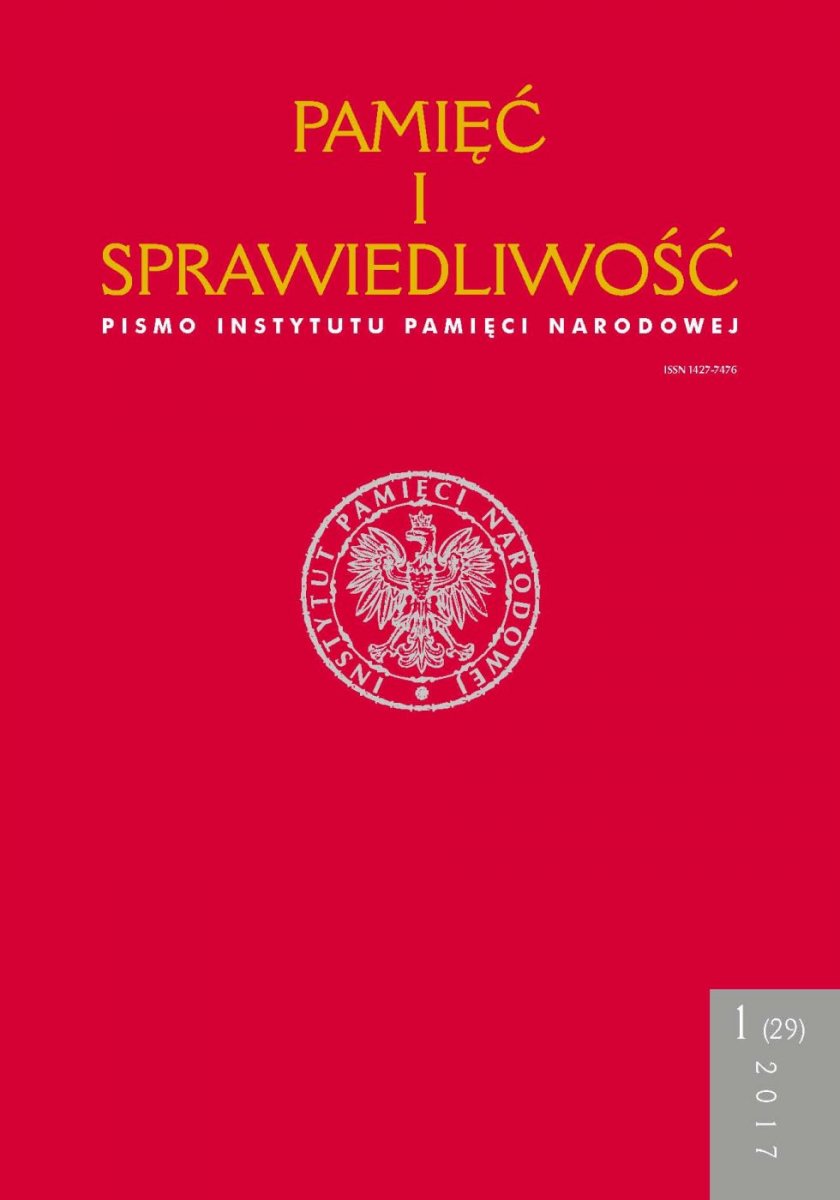Polityka władz Jugosławii wobec Kościoła katolickiego w latach 1945–1971
Pamięć i Sprawiedliwość, Bd. 29 Nr. 1 (2017), pages: 236-251
Publication date: 2017-06-30
Abstract
Literaturhinweise
Akmadža M., Katolička crkva u komunističkoj Hrvatskoj 1945-1980, Zagreb-Slavonski Brod 2013.
Akmadža M., Katolička crkva i Hrvatsko proljeće, „Časopis za suvremenu povijest” 2012, br 36, s. 603-630.
Akmadža M., Pregovori Svete Stolice i Jugoslavije i potpisivanje protokola iz 1966. godine, „Časopis za suvremenu povijest” 2004, nr 36, s. 473-503.
Akmadža M., Uzroci prekida diplomatskih odnosa između Vatikana i Jugoslavije 1952. Godine, „Croatica Christiana Periodica” 2003, br. 52, s. 171-202.
Alexander S., The Triple Myth: A Life of Archbishop Alojzije Stepinac, New York 1987.
Alexander S., Church and state in Yugoslavia since 1945, Cambridge 1979.
Banac I., The National Question in Yugoslavia: Origins, History, Politics, Cornell University Press 1988.
Boeckh K., Vjerski progoni u Jugoslaviji 1944. – 1953.: staljinizam u titoizmu, „Časopis za suvremenu povijest” 2006, br. 2, s. 403-431.
Casaroli A., Pamiętniki. Męczeństwo cierpliwości. Stolica Święta i kraje komunistyczne (1963-1989), Warszawa 2001.
Дакица Г. Р., Буди католик или умри. Геноцид над црбима у НДХ, Београд 1994.
Dedijer V., The Yugoslav Auschwitz and the Vatican, Prometheus Books 1992.
Gallagher Ch. R., The United States and the Vatican in Yugoslavia, 1945-50, [w]: Religion and the Cold War, D. Kirby (red.), New York 2003, s. 118-144.
Markešić I., »Crkvena šutnja« u vrijeme hrvatskog proljeća, [w]: Hrvatsko proljeće 40 godina poslije, T. Jakovina (red.), Zagreb 2012, s. 245-270.
Novak V., Magnum Crimen, Nova Knjiga 1986.
Pleskot P. (red.), Wina i kara. Społeczeństwa wobec rozliczeń zbrodni popełnionych przez reżimy totalitarne w latach 1939–1956, Warszawa 2015
Radić R., Jugoslavija i Vatikan 1918-1992. Godine, „Annales, Series Historia et Sociologia” 2014, nr 24 (4), s. 691-702.
Radosavljević P., Odnosi izmedju Jugoslavije i Svete Stolice 1963-1978. Prilog za istoriografiju diplomatsko-verskih nastojanja Vatikana na Balkanu i u Srednjoj Evropi, Beograd 2012.
Stehle H., Tajna dyplomacja Watykanu. Papiestwo wobec komunizmu (1917-1991, Warszawa 1993.
Tomasević S., Tito u Vatikanu: Stepinčev progonitelj kod pape Pavla VI, Zagreb 2011.
Trogrlić S., Istarska svećenička udruženja – Zbor svećenika sv. Pavla za Istru i Društvo svećenika sv. Ćirila i Metoda u Pazinu (1945. – 1952.), „Croatica Christiana Periodica” 2008, br. 61, s. 123-149.
Velikonja M., Separation & Politcal Intolerance in Bosnia-Herzegovina, Texas A&M University Press 2003.
Wawryszuk P., Jugosławia, [w]: Sprawiedliwość, zemsta i rewolucja. Rozliczenia z wojną i okupacją w Europie Środkowo-Wschodniej, A. Paczkowski (red.), Gdańsk 2016, s. 97128.
Zacharias M. J., Komunizm – federacja – nacjonalizmy. System polityczny w Jugosławii 1943-1991. Powstanie – przekształcenia – rozkład, Warszawa 2004.
Zenderowski R., Religia a tożsamość narodowa i nacjonalizm w Europie Środkowo-Wschodniej. Między etnicyzacją religii a sakralizacją etnosu (narodu), Wrocław 2001.
 Język Polski
Język Polski
 English
English
 Deutsch
Deutsch
 Français (France)
Français (France)
 Italiano
Italiano
 Русский
Русский


 PDF (Język Polski)
PDF (Język Polski)
